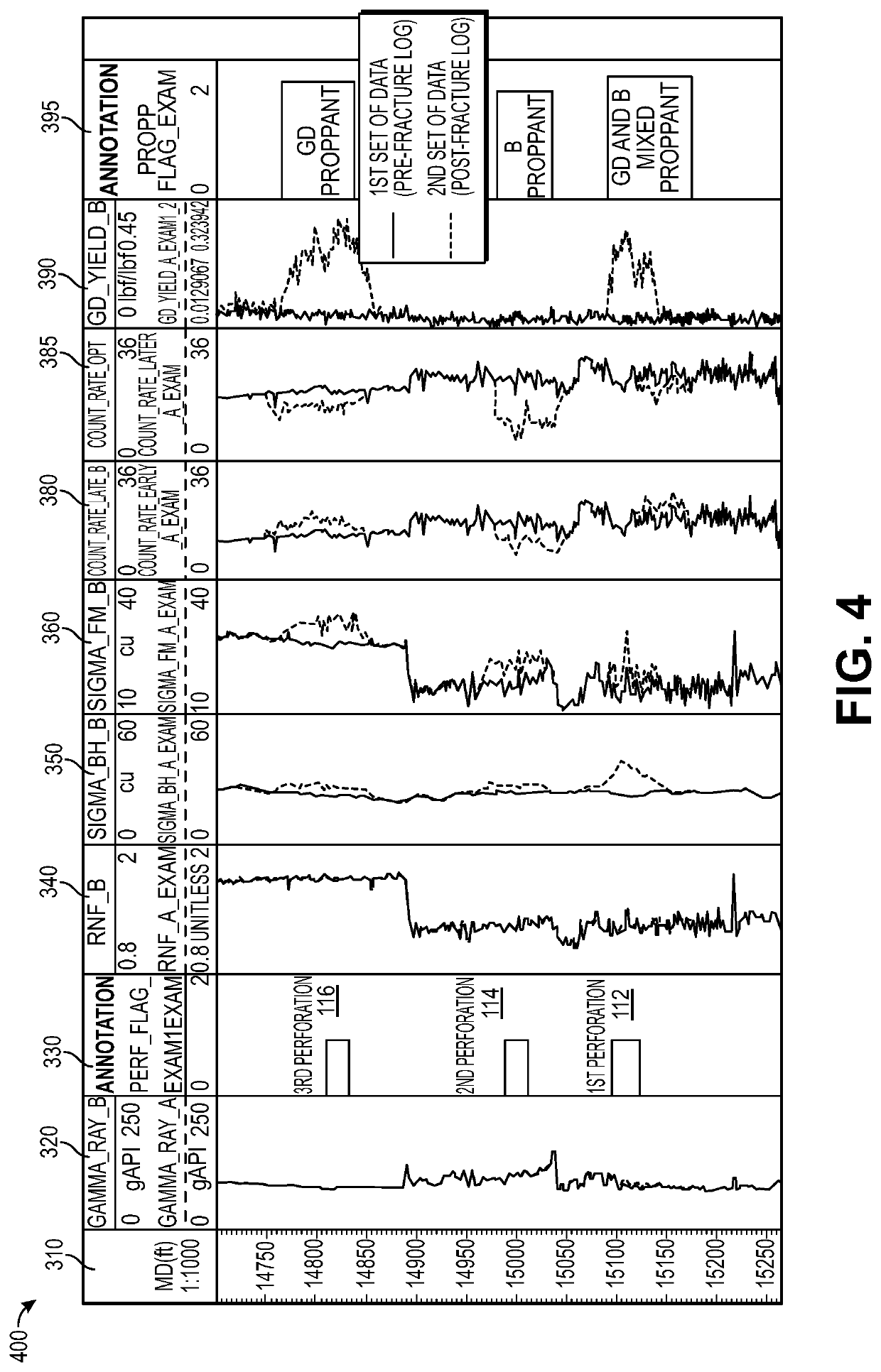Systems and methods for differentiating non-radioactive tracers downhole
a technology of non-radioactive tracers and differentiating systems, applied in the field of systems and methods for differentiating non-radioactive tracers downhole, can solve the problem of not being able to distinguish gd-tagged proppants
- Summary
- Abstract
- Description
- Claims
- Application Information
AI Technical Summary
Benefits of technology
Problems solved by technology
Method used
Image
Examples
Embodiment Construction
[0014]The present disclosure is directed to systems and methods for differentiating a first downhole scenario from a second downhole scenario using data captured by a downhole tool (e.g., a pulsed neutron capture (PNC) tool). In the first scenario, a single NRT-tagged proppant is present. In the second scenario, a combination / mixture of a first NRT-tagged proppant and a second NRT-tagged proppant is present. For example, the systems and methods may differentiate a gadolinium (Gd)-tagged proppant from a combination / mixture of the Gd-tagged proppant and a boron (B)-tagged proppant, even if the percentage of the B-tagged proppant is low (i.e., with respect to the percentage of Gd-tagged proppant). In another example, the systems and methods may differentiate a samarium (Sm)-tagged proppant from a combination / mixture of the Sm-tagged proppant and a boron (B)-tagged proppant, even if the percentage of the B-tagged proppant is low. The percentage (e.g., of the B-tagged proppant) in the mi...
PUM
 Login to View More
Login to View More Abstract
Description
Claims
Application Information
 Login to View More
Login to View More - R&D
- Intellectual Property
- Life Sciences
- Materials
- Tech Scout
- Unparalleled Data Quality
- Higher Quality Content
- 60% Fewer Hallucinations
Browse by: Latest US Patents, China's latest patents, Technical Efficacy Thesaurus, Application Domain, Technology Topic, Popular Technical Reports.
© 2025 PatSnap. All rights reserved.Legal|Privacy policy|Modern Slavery Act Transparency Statement|Sitemap|About US| Contact US: help@patsnap.com



